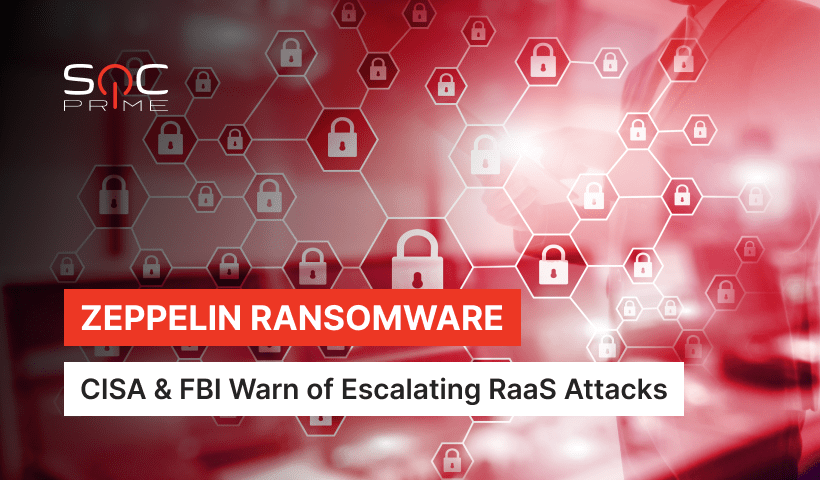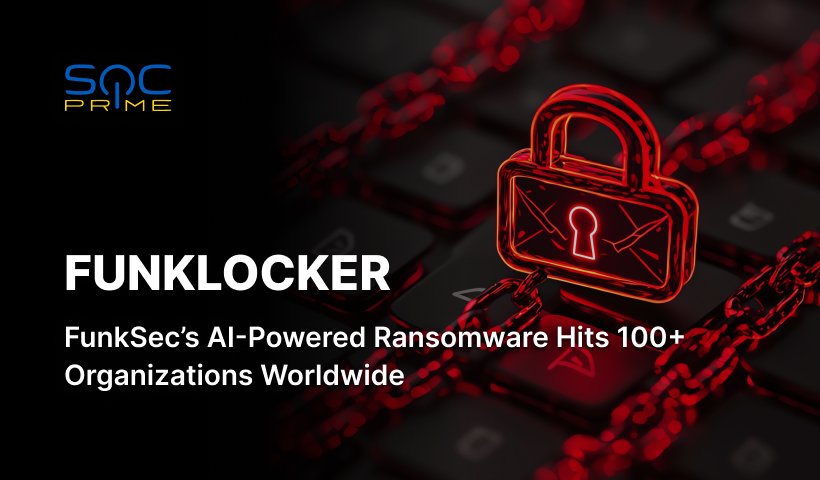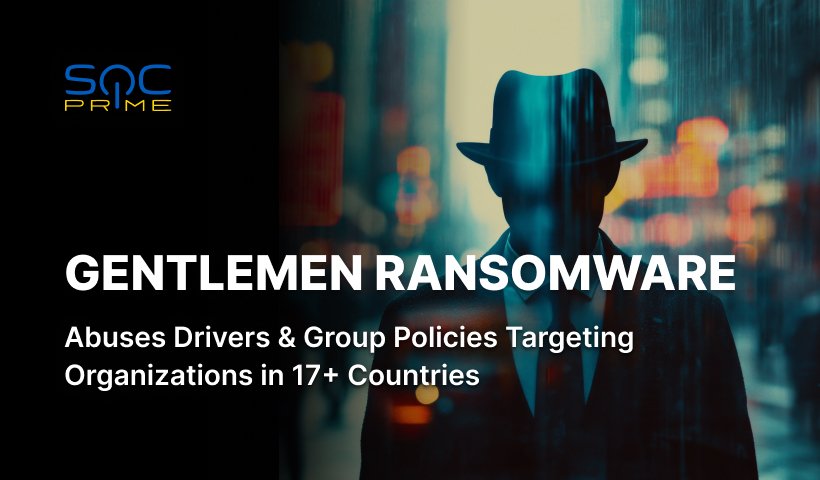Zeppelin Ransomware Detection: CISA and FBI Issue a Joint Advisory for Enhanced Protection Against RaaS Threats

Table of contents:
According to SOC Prime’s Detection as Code Innovation Report covering the threat landscape of 2021-2022, the Ransomware-as-a-Service (RaaS) model is gaining a monopoly in the cyber threat arena, with the majority of ransomware affiliates involved in diverse RaaS campaigns.
On August 11, 2022, CISA, in conjunction with the FBI, issued a joint cybersecurity advisory on Zeppelin ransomware covering IOCs and TTPs related to this ransomware variants to help organizations effectively defend against escalating threats. Zeppelin actors operate based on the RaaS business model, targeting organizations in multiple industries, including defense, education, IT, and healthcare.
Detect Zeppelin Ransomware
To mitigate the risks of compromise by Zeppelin ransomware, cybersecurity practitioners are looking for fast and efficient ways to timely identify the infection in their organization’s infrastructure by strengthening cyber defense capabilities. SOC Prime’s Detection as Code platform has recently released a couple of Compliance-based Sigma rules crafted by our keen Threat Bounty developer Nattatorn Chuensangarun enabling organizations to proactively defend against Zeppelin ransomware attacks. Here’s a link to gain instant access to the related context-enriched detections leveraging SOC Prime’s Cyber Threats Search Engine, available for free and without registration:
Check Point NGFW Signature Detection for Zeppelin Ransomware
Fortinet Signature Detection for Zeppelin Ransomware
The above-referenced Sigma rules can be used across 17 SIEM, EDR, and XDR technologies and are aligned with the MITRE ATT&CK® framework addressing the Execution tactic along with User Execution (T1204) applied as its primary technique.
Engage in SOC Prime’s crowdsourced initiative, Threat Bounty Program, to contribute to collaborative cyber defense by authoring your own detection content, receiving recurring rewards for your input, and gaining recognition among industry peers.
Registered SOC Prime users can also take advantage of the entire collection of Sigma rules available for Zeppelin ransomware detection. Click the Detect & Hunt button to gain access to the related detection algorithms available in the Threat Detection Marketplace repository of SOC Prime’s platform. Alternatively, browse SOC Prime and drill down to the comprehensive cyber threat context related to the Zeppelin ransomware in conjunction with a list of relevant Sigma rules. By clicking the Explore Threat Context button below, even non-registered users can make the most of valuable contextual metadata for accelerated threat investigation, including MITRE ATT&CK and CTI references, relevant executable binaries, and more actionable insights.
Detect & Hunt Explore Threat Context
Zeppelin Ransomware Analysis
The latest cybersecurity alert issued in collaboration with CISA and FBI gains insights into Zeppelin ransomware and provides guidelines on how to effectively mitigate the threat. Zeppelin ransomware belongs to the Vega malware family, with the group’s name attributed to ransomware operations tracked as Vega or VegaLocker. Threat actors have been leveraging Zeppelin ransomware since 2019, targeting business and critical infrastructure organizations in diverse industry sectors. Zeppelin ransomware maintainers have also been observed requesting ransom payouts in Bitcoin amounting to over one million dollars.
According to the research by Picus Labs, Zeppelin actors came into the limelight in the cyber threat arena by leveraging malware advertisements aimed at the russian-speaking audience. All ransomware variants delivered by threat actors had similarities in terms of code, however, displayed distinguished capabilities. Zeppelin appears to be highly configurable with the ability to be deployed in multiple fashions, as a DDL or EXE file, and via the PowerShell dropper. Zeppelin actors apply the double extortion tactic to spread their latest ransomware variant on the compromised system using data exfiltration and actively forcing victims to pay the ransom.
Among the most popular methods for intrusion and deploying Zeppelin ransomware are Remote Desktop Protocol, vulnerability exploits, and phishing attack vectors.
To mitigate the Zeppelin-related threats, cybersecurity researchers recommend prioritizing the exploited vulnerabilities, enabling multi-factor authentication across all organization’s services as an extra layer of security, upgrading to the latest software versions, and applying other best practices that help maintain security hygiene.
Progressive organizations are striving to adopt the proactive cybersecurity strategy to boost cyber defenses. With SOC Prime’s Detection as Code platform, cybersecurity practitioners can find a streamlined and efficient way to reinforce the organization’s threat detection and response capabilities, as well as accelerate threat hunting velocity. By joining the ranks of our Threat Bounty Program, aspiring detection content authors gain an opportunity to enrich the collective industry expertise by sharing their detection algorithms with the global cybersecurity community while monetizing their input on a regular basis.



